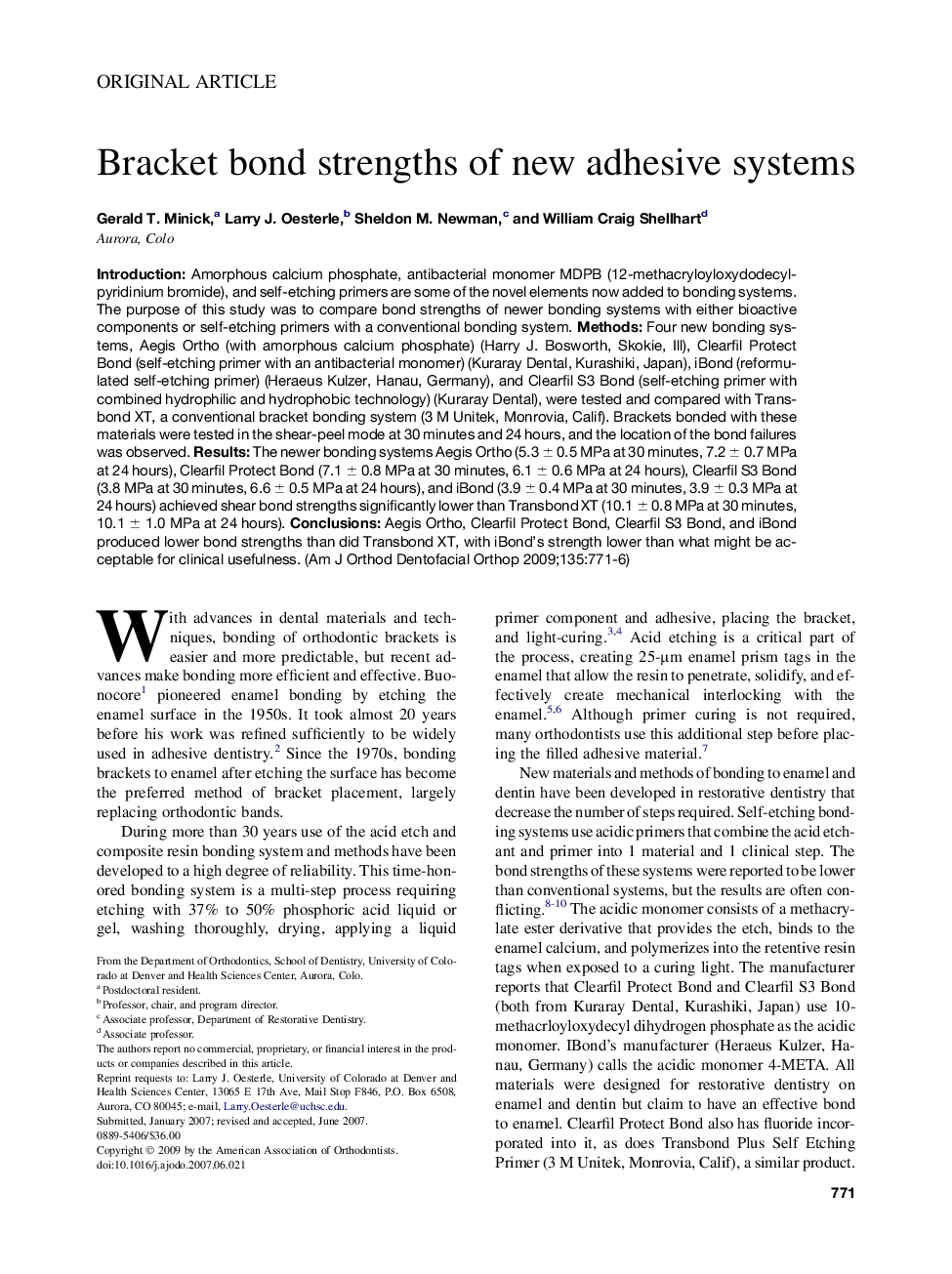| Article ID | Journal | Published Year | Pages | File Type |
|---|---|---|---|---|
| 3118246 | American Journal of Orthodontics and Dentofacial Orthopedics | 2009 | 6 Pages |
IntroductionAmorphous calcium phosphate, antibacterial monomer MDPB (12-methacryloyloxydodecylpyridinium bromide), and self-etching primers are some of the novel elements now added to bonding systems. The purpose of this study was to compare bond strengths of newer bonding systems with either bioactive components or self-etching primers with a conventional bonding system.MethodsFour new bonding systems, Aegis Ortho (with amorphous calcium phosphate) (Harry J. Bosworth, Skokie, Ill), Clearfil Protect Bond (self-etching primer with an antibacterial monomer) (Kuraray Dental, Kurashiki, Japan), iBond (reformulated self-etching primer) (Heraeus Kulzer, Hanau, Germany), and Clearfil S3 Bond (self-etching primer with combined hydrophilic and hydrophobic technology) (Kuraray Dental), were tested and compared with Transbond XT, a conventional bracket bonding system (3 M Unitek, Monrovia, Calif). Brackets bonded with these materials were tested in the shear-peel mode at 30 minutes and 24 hours, and the location of the bond failures was observed.ResultsThe newer bonding systems Aegis Ortho (5.3 ± 0.5 MPa at 30 minutes, 7.2 ± 0.7 MPa at 24 hours), Clearfil Protect Bond (7.1 ± 0.8 MPa at 30 minutes, 6.1 ± 0.6 MPa at 24 hours), Clearfil S3 Bond (3.8 MPa at 30 minutes, 6.6 ± 0.5 MPa at 24 hours), and iBond (3.9 ± 0.4 MPa at 30 minutes, 3.9 ± 0.3 MPa at 24 hours) achieved shear bond strengths significantly lower than Transbond XT (10.1 ± 0.8 MPa at 30 minutes, 10.1 ± 1.0 MPa at 24 hours).ConclusionsAegis Ortho, Clearfil Protect Bond, Clearfil S3 Bond, and iBond produced lower bond strengths than did Transbond XT, with iBond's strength lower than what might be acceptable for clinical usefulness.
